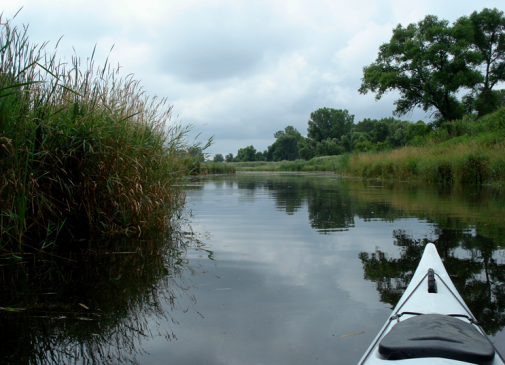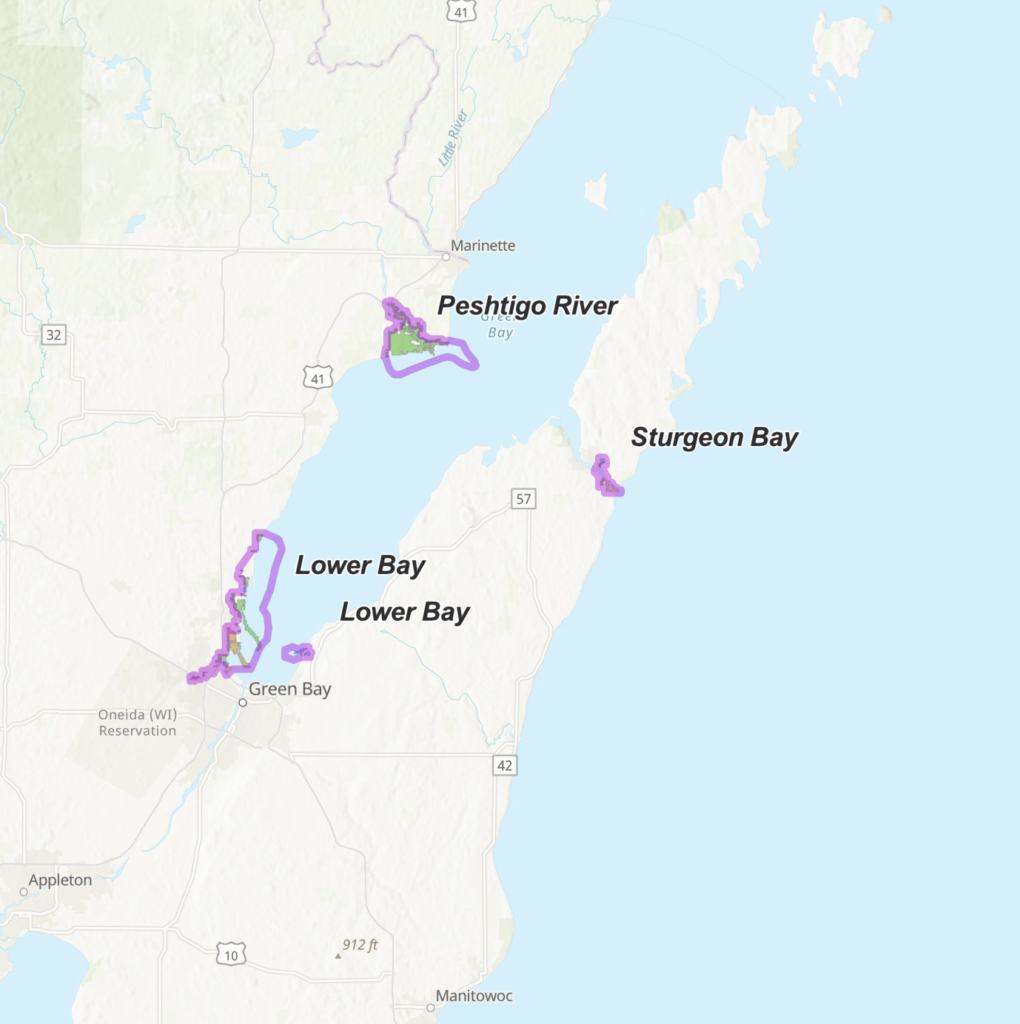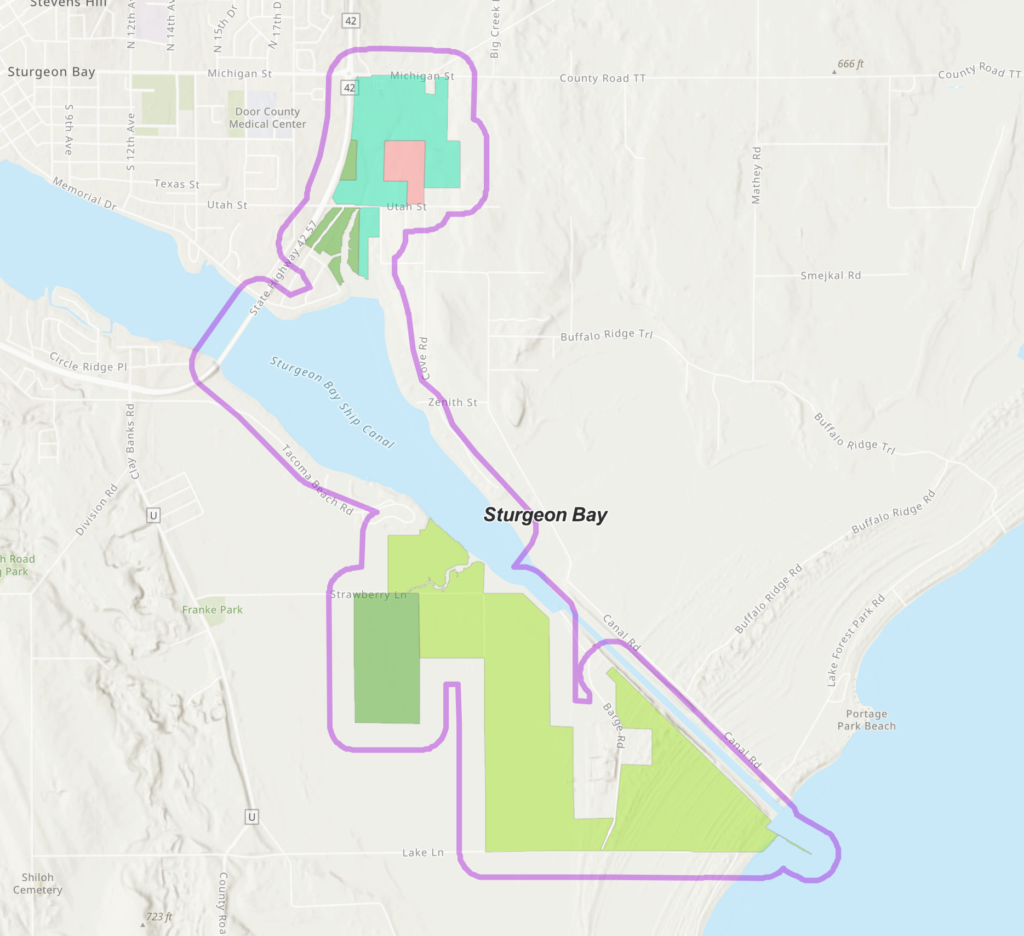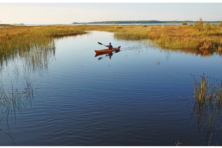Sturgeon Bay Sites Make Preliminary List for NERR Natural Areas
- Share
- Tweet
- Pin
- Share

Selecting a site for the reserve’s visitor/education center will take place later
Lands in Sturgeon Bay have made the list of preliminary recommended sites for the natural areas to be included in the proposed Bay of Green Bay National Estuarine Research Reserve System (NERR).
The University of Wisconsin-Green Bay is hosting public meetings Sept. 7 and 8 to provide an opportunity for anyone who wishes to participate to ask questions and share comments about the proposed site designations of the Lake Michigan reserve. A presentation about the proposal and the NERR will be provided at both meetings.
An in-person public meeting will be held Wednesday, Sept. 7, 1 pm, in the STEM Innovation Center on the UW-Green Bay campus, 2019 Technology Way in Green Bay.
A virtual public meeting will be held Thursday, Sept. 8, 3:30 pm, at wisconsin-edu.zoom.us/j/99551264991?pwd=QUlPc0dhWSthRUFGaDYvakZvNG1XUT09. The web meeting ID is 995 5126 4991, and the attendee access code is NERR. Participants may also join the meeting by phone by using the toll-free number 312.626.6799, meeting ID 995 51264991, and the attendee access code 688730.
In addition, members of the public may share written comments on the recommended reserve sites with Emily Tyner, UW-Green Bay director of freshwater strategy, at [email protected]. All written comments must be received no later than Sept. 15.
All comments received will be considered by the state when formally nominating a site or sites to the National Oceanic and Atmospheric Administration (NOAA).

About the NERR
NERRs are a national network of 30 sites across the coastal U.S., including the Great Lakes, that are designed to protect and study estuaries and their coastal wetlands.
Established through the Coastal Zone Management Act, the reserves represent a partnership program between NOAA and the coastal states. NOAA provides funding and national guidance, and each site is managed on a daily basis by a lead state agency or university with input from local partners. For the Green Bay NERR, the University of Wisconsin-Green Bay is leading the designation process.
At the local level, a Green Bay NERR will offer a coordinating force to manage, restore and protect the Green Bay ecosystem, with a programmatic focus on research, education, stewardship and training.
Each NERR site provides a “living laboratory” in which scientists and educators conduct research, outreach and education regarding estuarine-based natural resources. Reserve sites enhance place-based research, create distinct educational and training resources for K-12 students and coastal decision makers, facilitate local stewardship of aquatic natural resources and support local economic development.

About the Site-selection Process
Site designation is a six-step process that typically takes between four and six years to complete.
Wisconsin initiated the designation process for the proposed Bay of Green Bay reserve on March 25, 2019, when Gov. Tony Evers submitted a letter of interest to NOAA expressing interest in designating a reserve in the Green Bay coastal area of Lake Michigan and identifying UW-Green Bay as the lead state agency for the designation process.
NOAA affirmed support for this effort July 19, 2019.
Door County’s support of the new NERR came early in 2019, when both the Door County Board of Supervisors and the Sturgeon Bay Common Council approved resolutions in support of a NERR for the Green Bay watershed.
In 2021, the city formed an ad hoc NERR committee designed to identify natural areas and bring the NERR’s primary visitor/education center to Sturgeon Bay.
Three UW-Green Bay committees were responsible for developing the list of NERR natural areas. Only publicly accessible lands within these areas were eligible to be included. In total, the recommended reserve site includes approximately 11,500 acres of publicly owned land.
Although the preliminary list of natural areas has been selected, the site for the reserve’s visitor/education center will be selected later.
Next Steps in the Nomination Process
Following the public hearing, UW-Green Bay will consider all comments received and develop a formal document nominating a reserve site. If the governor’s office approves the site nomination, it will go to NOAA for another review. That process can take several months to complete and concludes with NOAA sending a letter to the governor either accepting, rejecting or suggesting modifications to the nomination.
Learn more about the NERR designation process at coast.noaa.gov/nerrs/about/designation-process.html.


